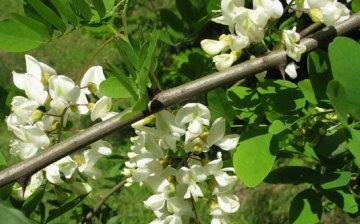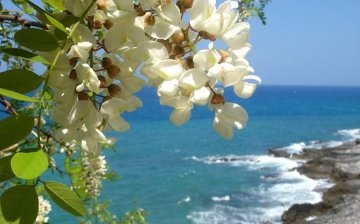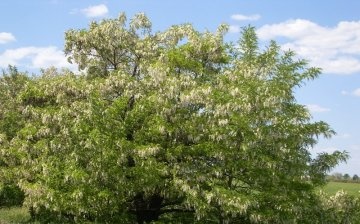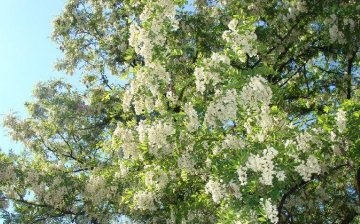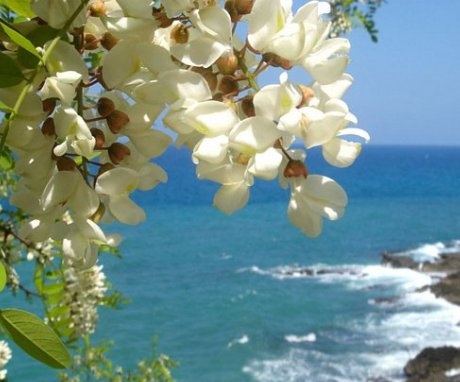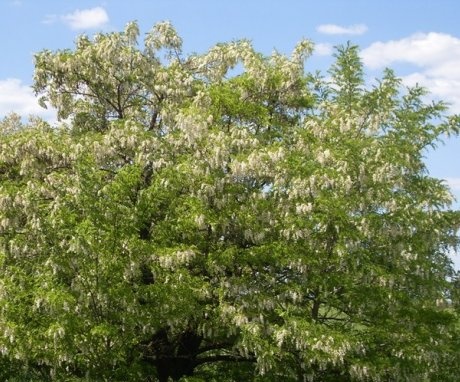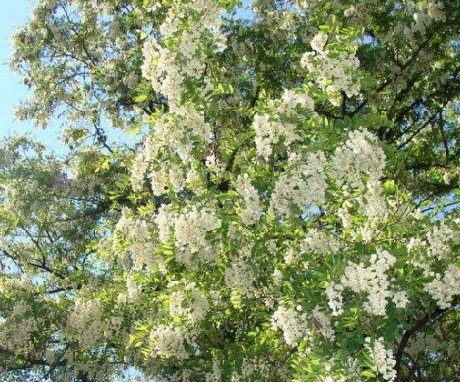Robinia pseudoacacia - an ornamental tree used in landscape design
Acacia is one of the most picturesque trees to be found in mid-latitudes. This plant belongs to the genus Robinia, which are rather distant relatives. For unknown reasons, the opinion was established among the people that robinia is a white acacia. In fact, among robinas, species with red and lilac flowers predominate.
Content:
- Robinia is a false acacia, where is her homeland?
- Robinia pink
- Features of growing robinia-pseudoacacia
Robinia is a false acacia, where is her homeland?
Who among us has not admired the blooming robinia - the tree during the flowering period resembles a fragrant bouquet that looks somewhat surprising against the background of modest trees in the middle lane. In fact, the birthplace of this tree is North America, it is found in southern China and in the mountains of Guatemala.
The well-known pseudoacacia robinia white is a tree that can reach enormous sizes, its crown is not typical for the natives of our continent - it has an umbrella-shaped shape, often asymmetric. The plant is extremely resistant to drought, otherwise it would not have been able to survive in the savannah conditions. It is not afraid of rabbinium and severe frosts, thanks to which it has spread so widely in Ukraine and Russia, it is used as a park tree and when planting shelterbelts.
Robinia has one more advantage - it is an excellent honey plant, its honey is considered medicinal, it is not sugar-coated during storage and has a very pleasant aroma of a flowering tree.
Robinia pink
Quite often, we have two more varieties of Robinia - Kelsey and New Mexican. They are distinguished by the pink or lilac color of the petals, especially the lush flowering, which comes a little later than the white and longer. Flowering lasts almost a month, this is due to specially formed inflorescences. Both species grow as shrubs, reaching a height of up to 7 m. At 10-15 years of growth, the active flowering of shrubs stops. Therefore, when using them for decorative purposes, you should take care of timely rejuvenation bush. Also, the plants are characterized by low frost resistance, it makes no sense to plant them in northern latitudes - the buds affected by frost will not give active flowering.
Features of growing robinia-pseudoacacia
It is quite possible to grow robinia in a summer cottage, provided it is planted in a well-lit place, the second condition is the absence of stagnant groundwater and swampiness.
The plant propagates by seeds and root suckers.
To accelerate the germination of plants, they should be scalded with boiling water and dipped in cold water - this will lead to cracking of the shell and the rapid appearance of a sprout.
Seeds should be sown in prepared boxes with soil; it is recommended to keep seedlings at a temperature not lower than +20 degrees. At the end of June, young robinia can be planted in open ground.
The seedling bed should be prepared in a special way - add a lot of compost to the soil, add ash and nitrogen fertilizers. The distance between the seedlings should be at least 30X30 cm. Further care will consist in watering and applying complex fertilizers. With high-quality care for the season, you can get meter-long seedlings with side branches.But replanting them is best postponed until spring.
For reproduction by side shoots, you just need to dig up a young shoot with a part of the rhizome and plant it in a new place. You can propagate pseudoacacia by root cuttings. In this case, carefully cut pieces of roots are planted in loose soil, which should contain a lot of sand. With good watering and warm weather, shoots should form in a couple of weeks. Planting robinia with green cuttings is a thankless task, most cuttings die immediately, others cannot withstand the winter cold and high humidity.
When planting young trees, first of all, you should remember about their need for good lighting and protection from northern winds.
The trees are transplanted in the spring, until the leaves begin to bloom. Autumn transplanting adversely affects the roots of the plant - excessive moisture in the soil and its low temperature are harmful to them. Plants are not recommended to be planted deeply - this creates a threat of root damping out. Robinia growth will be more active if the soil is alkaline, loose, even poor. In clayey areas, it is advisable to plant trees on hills, so that the subsidence of the soil, the surface of the trunk circle is above the soil level.
Planted as decorative, pseudo-acacia robinia will be a real decoration of the site, especially at the beginning of summer, during the period when foamy fragrant bunches of flowers appear on them. In the summer heat, their spreading crowns will create shade and attract with the opportunity to hide from the summer heat.



